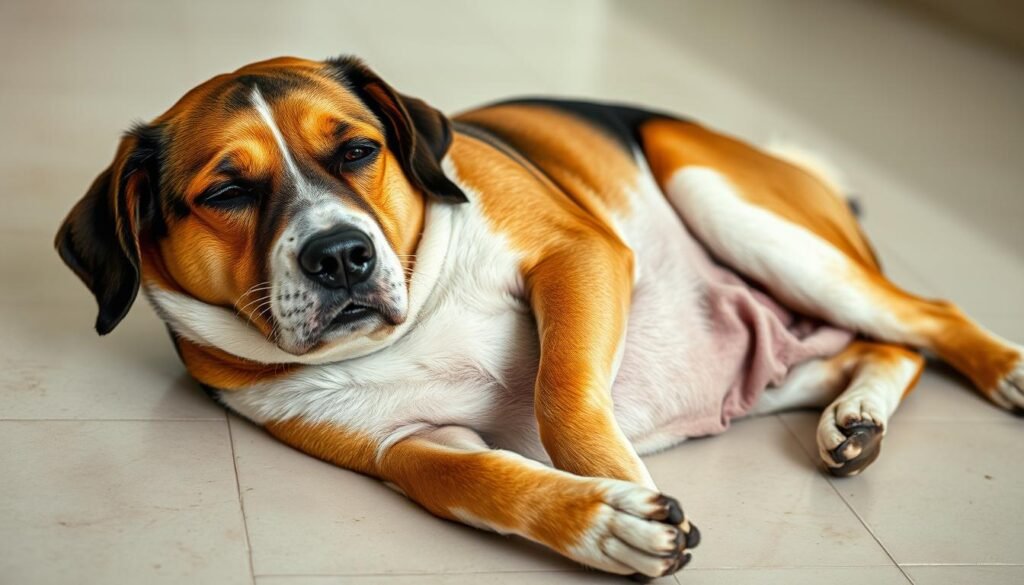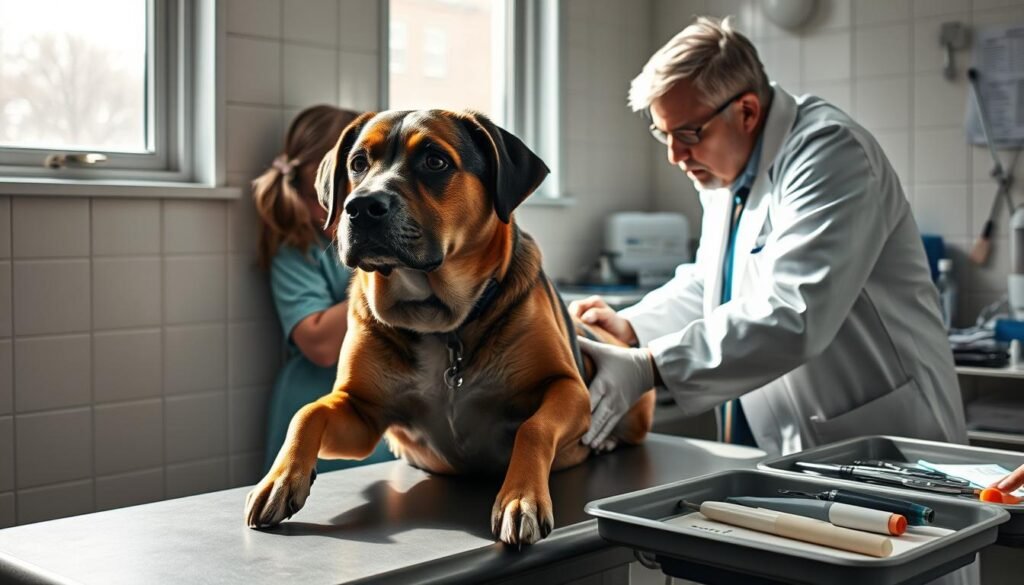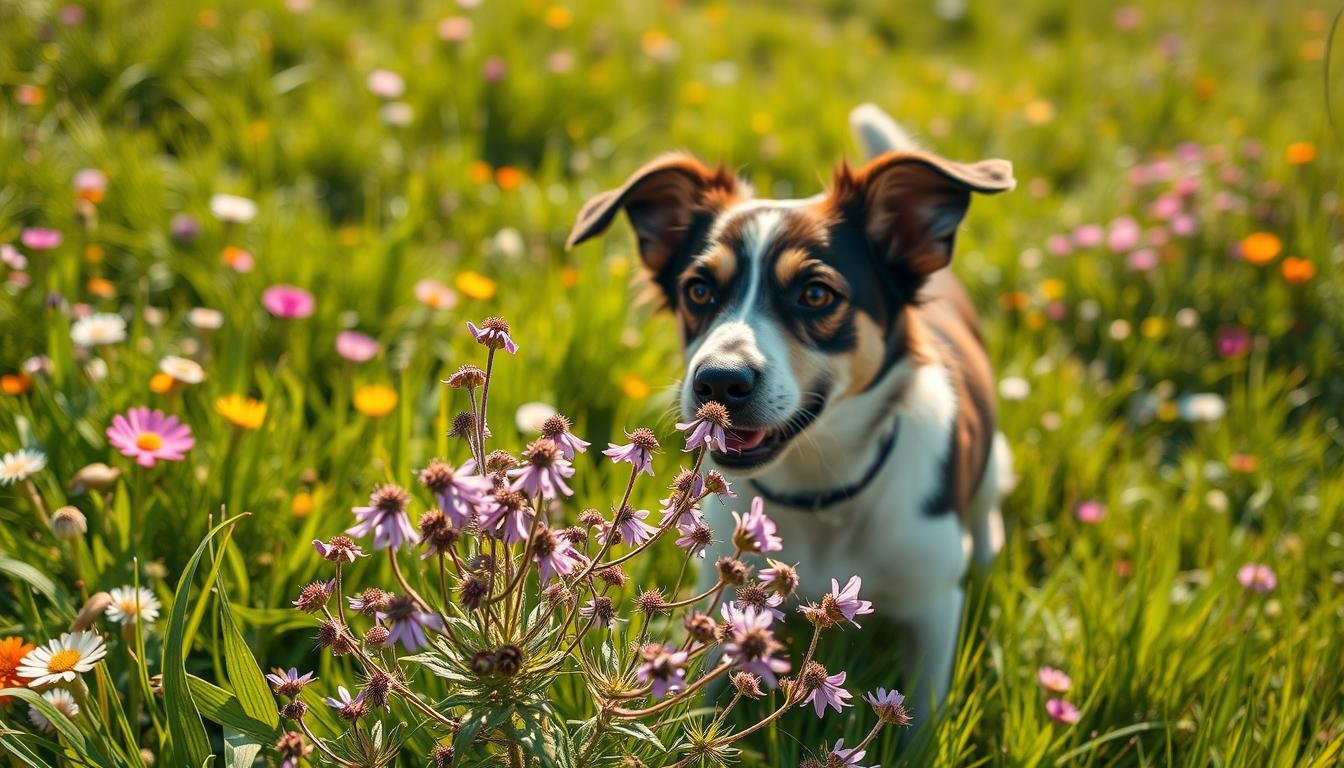At a family BBQ, it’s common to see a curious pet eyeing the food table. One of the most tempting items is often a corn cob. While it might seem harmless to share, pet owners should be cautious. The kernels may offer some nutritional value, but the cob itself can pose serious risks.
Corn kernels are generally safe in moderation. They provide fiber and essential nutrients. However, the cob is a different story. Its hard, fibrous nature can lead to choking or intestinal blockages. These issues require immediate veterinary attention.
Understanding the difference between the kernels and the cob is crucial for responsible pet care. This knowledge helps ensure your furry friend stays healthy and happy. For more detailed insights, check out this resource.
Key Takeaways
- Corn kernels are safe for pets in small amounts.
- The cob can cause choking or blockages.
- Immediate vet care is needed if a cob is ingested.
- Understanding food safety is key to pet health.
- Always monitor pets around human food.
Understanding Dog Digestion and the Role of Corn
Understanding how dogs digest corn is essential for pet owners. While this ingredient is common in many commercial pet foods, its safety and benefits depend on how it’s served. Let’s explore the nutritional value and digestive process to ensure your pet’s well-being.
Nutritional Value of Corn for Dogs
Corn provides several nutrients that can benefit your pet. It’s a source of protein, fiber, and essential vitamins like B and E. These nutrients support energy levels and overall health. However, corn should only be a small part of a balanced diet.
While it offers some benefits, it’s not a complete food. Dogs require a variety of nutrients from different sources. Feeding too much corn can lead to an unbalanced diet, which may affect their long-term health.
How Dogs Process Corn Kernels
When dogs consume corn kernels, their digestive system breaks them down in the stomach and intestines. The kernels are generally safe and can pass through without issues. However, they don’t provide significant nutritional value on their own.
It’s important to note that each dog’s digestive system is unique. Some pets may process corn easily, while others might experience discomfort. Always monitor your pet after introducing new foods to their diet.
Feeding whole corn, especially with the cob, is not recommended. The cob poses serious risks, including blockages that can harm your pet’s digestive health. Stick to kernels in moderation for a safer option.
can dogs eat corn on the cob
The cob, often overlooked, is a hidden hazard for pets. While kernels are generally safe, the cob itself poses serious risks. Its fibrous structure is indigestible, making it a potential threat to your pet’s health.
The Hidden Danger: The Cob Component
The cob’s hard texture can lead to blockage in the digestive tract. Unlike kernels, it doesn’t break down during digestion. This can cause severe discomfort and even life-threatening complications.
Veterinarians often see cases where a cob has lodged in a pet’s intestines. These situations usually require surgical intervention. The cob’s size and shape make it particularly dangerous, especially for smaller breeds.
Potential Blockage and Choking Risks
Choking is another significant risk. Smaller pets may struggle to swallow a cob, leading to airway obstruction. Even if swallowed, the cob can create a blockage in the intestines, causing pain and distress.
Real-life examples highlight the severity. Many emergency cases involve pets who ingested a cob during family gatherings. Immediate veterinary care is crucial to prevent long-term damage.
While dogs eat kernels without issue, the cob remains a significant danger. Even a small piece can cause harm. Always monitor your pet around food to ensure their safety.
Recognizing Symptoms of Gastrointestinal Obstruction

Spotting early signs of digestive issues can save your pet’s life. Gastrointestinal obstruction is a serious condition that requires immediate attention. Recognizing the symptoms early can make all the difference in ensuring your pet’s health and well-being.
Common Signs: Vomiting and Abdominal Discomfort
One of the most obvious signs of a blockage is persistent vomiting. This is often accompanied by abdominal pain, which may cause your pet to whine or appear restless. Other symptoms include diarrhea, loss of appetite, and lethargy.
In some cases, pets may also show signs of dehydration or bloating. These symptoms indicate that the intestine may be compromised. Ignoring these signs can lead to severe complications, including tissue damage or even rupture.
When to Contact a Veterinarian
If you notice any unusual behavior or symptoms, contact your vet immediately. Early intervention is crucial to prevent long-term damage. “Even a subtle case of discomfort should not be ignored,” advises Dr. Jane Smith, a leading veterinary expert.
Your pet’s life may depend on prompt action. Delaying treatment can worsen the condition, making recovery more challenging. Always err on the side of caution and seek professional help at the first sign of trouble.
Immediate Steps if Your Dog Ingests a Corn Cob

Discovering that your pet has ingested a corn cob can be alarming, but knowing the right steps can make all the difference. Acting quickly and seeking professional help is crucial to ensure your pet’s safety.
Emergency Actions and Veterinary Advice
If you suspect your pet has swallowed a corn cob, treat it as an emergency. Do not attempt to induce vomiting without consulting a vet. The cob’s hard texture can cause severe damage to the intestine if not handled properly.
Contact your veterinarian immediately. Provide details about the incident, including the time of ingestion and any signs of distress. Early intervention can prevent life-threatening complications.
“Every minute counts in such situations,” says Dr. Emily Carter, a veterinary specialist. “Prompt action can save your pet’s life.”
Diagnostic Procedures and Treatment Options
Upon arrival at the clinic, the vet may perform diagnostic tests to locate the cob. X-rays are commonly used to identify blockages in the digestive tract. If the cob is detected, treatment options will depend on its location and severity.
Non-invasive methods, such as endoscopy, may be attempted first. However, if the cob is lodged deeply, surgery might be necessary. Procedures like gastrotomy or enterotomy involve opening the stomach or intestines to remove the obstruction.
| Step | Action |
|---|---|
| 1 | Contact your vet immediately. |
| 2 | Do not induce vomiting without professional advice. |
| 3 | Monitor for symptoms like vomiting or lethargy. |
| 4 | Follow the vet’s diagnostic and treatment plan. |
Timely intervention is critical. Even a single sign of discomfort warrants urgent care. Make sure to keep your pet away from harmful food items in the future to avoid such emergencies.
Expert Opinions and Veterinary Insights
Veterinary professionals emphasize the importance of understanding the risks associated with certain foods for pets. Their insights provide valuable guidance for pet owners, ensuring the health and safety of their furry companions.
Perspectives from Emergency Veterinarians
Emergency veterinarians frequently encounter cases involving dietary hazards. Dr. Derek M. Paul, a renowned veterinary expert, states, “Corn cobs are one of the most common causes of intestinal blockages in pets. Immediate intervention is crucial to prevent severe complications.”
Data from VEG and other reputable animal hospitals highlight that emergency visits related to cob ingestion are alarmingly high. These cases often require surgical procedures, emphasizing the need for caution.
Comparing Advice from Multiple Sources
Different sources agree on the dangers of corn cobs for pets. While many dogs eat kernels safely, the cob is a critical exception. The fact remains that its indigestible nature poses significant risks.
Experts recommend:
- Always remove the cob before feeding corn to your pet.
- Monitor your dog closely during meals to prevent accidental ingestion.
- Seek immediate veterinary care if a cob is swallowed.
By following these guidelines, pet owners can protect their dog’s health and avoid unnecessary emergency situations. Expert advice underscores the importance of informed action in such scenarios.
Safe Practices: Incorporating Corn into Your Dog’s Diet
Corn can be a healthy addition to your dog’s meals when prepared correctly. While it offers essential nutrients, improper handling can lead to risks. Follow these guidelines to ensure your pet enjoys this treat safely.
Proper Preparation and Serving Tips
Always remove the cob before serving corn to your pet. The kernels are safe, but the cob poses a choking hazard. Cook the kernels thoroughly and avoid adding seasonings like salt or butter, which can harm your dog’s health.
Portion control is key. Treats, including corn, should make up no more than 10% of your dog’s daily diet. Overfeeding can lead to digestive issues or weight gain. Stick to small amounts to keep your pet healthy.
Why Moderation and Removal of the Cob Matter
Moderation ensures your pet receives the benefits of corn without overloading their system. The cob, however, is indigestible and can cause blockages. Even a small piece can lead to serious health problems, requiring emergency veterinary care.
By removing the cob and serving only the kernels, you eliminate the risk of choking or intestinal obstruction. This simple step can prevent unnecessary trips to the vet and keep your pet safe.
Home Safety Tips to Prevent Accidental Ingestion
Keep corn and related scraps out of your pet’s reach. Dispose of cobs immediately after meals to avoid accidental ingestion. Supervise your dog during family gatherings where corn is served.
Store pet food and human food separately to prevent mix-ups. Educate family members about the dangers of feeding cobs to your dog. A little vigilance goes a long way in ensuring your pet’s safety.
| Step | Action |
|---|---|
| 1 | Remove the cob before serving corn. |
| 2 | Cook kernels thoroughly and avoid seasonings. |
| 3 | Limit corn to 10% of your dog’s diet. |
| 4 | Dispose of cobs immediately after use. |
| 5 | Supervise your pet during meals. |
By following these steps, you can safely incorporate corn into your dog’s diet. Always prioritize your pet’s health and well-being when introducing new foods.
Conclusion
Ensuring your pet’s safety around food requires careful attention and knowledge. While corn kernels can be a safe treat in moderation, the cob poses serious risks. Its indigestible nature can lead to blockages in the stomach or intestine, requiring immediate veterinary care.
If your dog ate a corn cob, act quickly. Contact your vet without delay to prevent complications. Expert advice consistently highlights the dangers of cobs, reinforcing the need for vigilance.
Safe practices are essential. Always remove the cob before offering corn to your pet. Monitor their meals and keep harmful items out of reach. Every person responsible for a pet should prioritize their health by following these guidelines.
In summary, dogs eat corn safely when prepared correctly. However, the cob is a hazard that demands caution. When in doubt, consult your vet to ensure your pet’s well-being.




